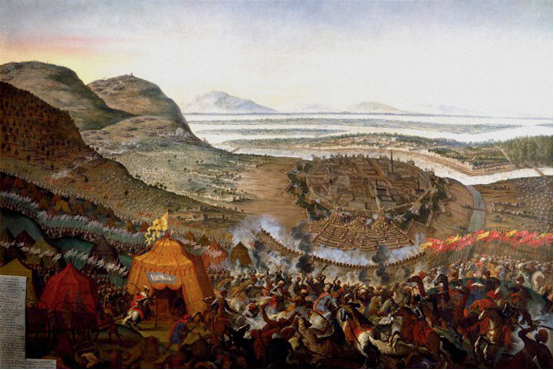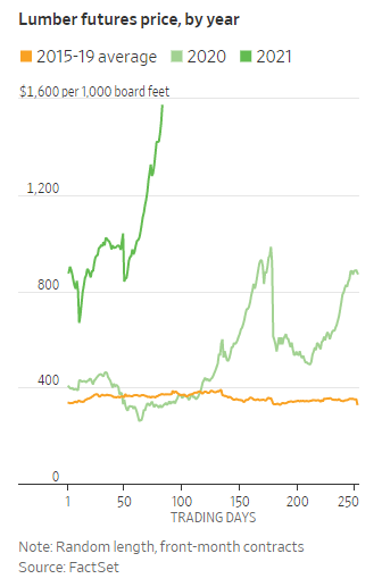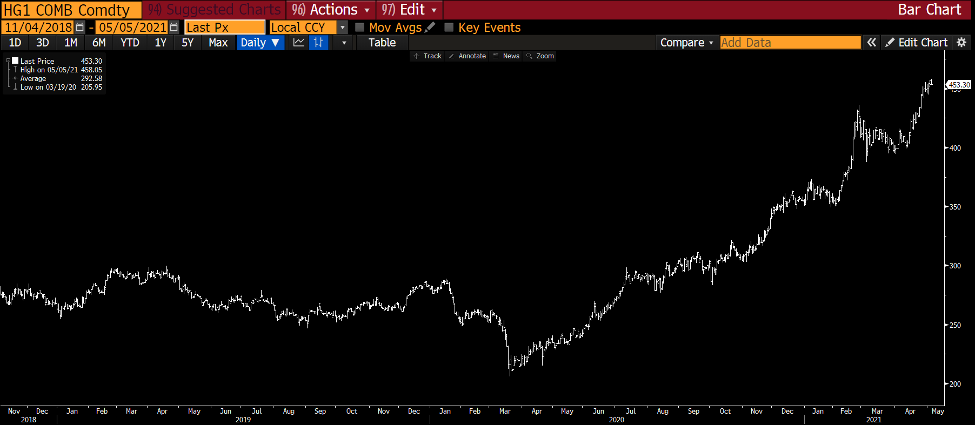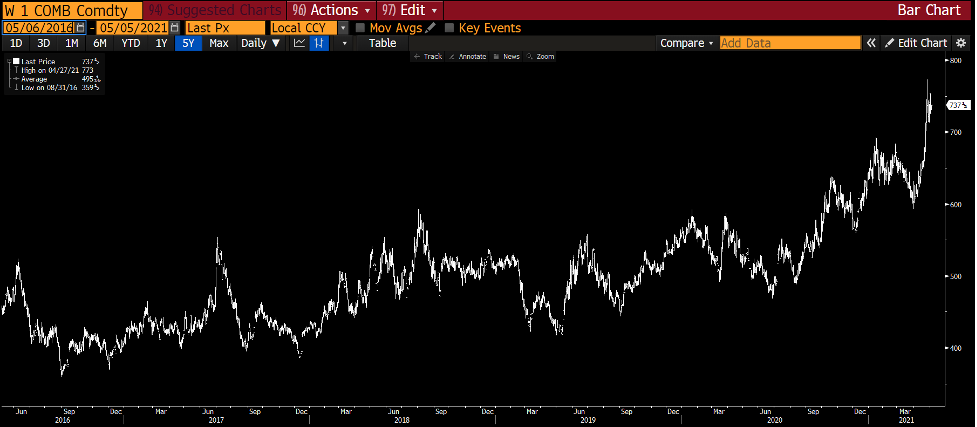This phrase is a well-known one. I have been thinking a lot
about inflation and, believe it or not, this is the phrase that keeps popping
into my head.
I started doing some research on its origins and this led me down a rabbit hole. The most plausible origin is as a reference to the Ottoman forces that pushed as far into Europe as the gates of Vienna (once in 1529 and again in 1683). Aside from numerous casual uses since then, the phrase became the title of a book published in 1989 which described the leveraged buyout—and eventual fall—of RJR Nabisco; later, the book became a movie starring the implacable James Garner. In my search for the origin of this phrase, I also came across references to Arnold Schwarzenegger as Conan the Barbarian and, on Urban Dictionary, I learned that it is a "polite" way to excuse yourself to the restroom. I think I'll stick with the Turks at the gates of Vienna, an image that conveys a dire risk of significant magnitude.

To ignore a problem of threatening barbarians would be
reckless. It's hard to say who was more barbaric in 1529, the Turks or the
Austrians, but for our purposes, we'll look at things from the point of view of
the besieged!
So, back to inflation, which has been getting more and more
press attention lately. Within the last couple of days, we have heard Janet
Yellen suggest that the central bank might need to raise rates in order to
stave off inflation. This was a strange comment, given that Jerome Powell just
a few days earlier had said that inflation was not a problem, and that we
should expect rates to remain extremely low for quite some time. I usually try
to take what these people say with the proverbial grain of salt, because at the
end of the day they can't really do much about real core issues. Sure, they can
print money like crazy and they can control short term interest rates, but they
cannot control the price of copper, wheat, oil, computer chips, or any number
of the myriad of things that ultimately drive whether inflation takes hold.
So, instead of parsing their press releases, I decided to look for some factual data for myself. The results are a little disturbing, and I think by the end of this post, you will believe that the barbarians are at least on the move, whether Janet and Jerome admit it or not.

Lumber
Let's start with what I always considered to be one of the
most volatile commodities to trade (so I stayed well clear of it!): lumber.
Lumber prices generally did nothing, day after day, when I was trading at the
mercantile exchange, but then some natural disaster or weird supply chain issue
would be rumored and suddenly you would see limit up (or down) for many days in
a row. These moves often caused the classic short squeeze situation and was
also deadly for option traders who needed to keep their hedges in line. The Wall
Street Journal this week printed the following graphic regarding
lumber prices. Looks like "one of those times" is upon us in this commodity.
Just from eyeballing this graph you can see that lumber
prices have approximately quadrupled from the 2015-2019 average.
Dr. Copper
Copper got this nickname because it supposedly provides the diagnosis for the economy at large. People generally don't own a ton of outright copper bars or coins (except for the huge pile of pennies in your car), but many of the things that you use every single day require copper or copper components. The contract at the CMX (price graph below) is for 25,000 pounds of shiny metal. Importantly, copper is the 3rd most widely consumed metal, after iron and aluminum. Over the last five years, the average price for copper has been $2.83 per pound. Today, it is around $4.53 per pound. I think Dr. Copper's diagnosis is that the prices for all things which use a lot of copper will be higher in the fairly soon.

Grocery Prices
Those of you who know me recognize that I enjoy eating. One
of the things I like to think about on the weekends is enjoyable meals and
dining. Occasionally I pick up a copy of Food and Wine magazine. Usually, the articles are pretty lightweight:
trends in the food industry, talking up some new hot restaurant, and sharing
some great recipes. However, one serious-sounding headline caught my eye
recently: "Grocery Prices Increased the Most in a Decade in 2020 - Here's how
2021 Will Look." In this article, the major reason given for the jump in 2020 grocery
prices had to do with supply chain issues and pandemic-related problems.
However, they did have this to say about the upcoming year:
"According to USDA data released
last week, the Consumer Price Index for grocery store or supermarket food
purchases last year was up 3.5 percent: That's not only a significant jump from
2019, where these retail "food-at-home" prices were up only 0.9
percent from the year before, but also well above the 20 year annual average of
2.0 percent and the highest annual increase since 2011."
So, you may say to yourself that
3.5% higher grocery prices are not that big of a deal, unless you are on a
tight budget. But, in addition to reading Food and Wine magazine I also
occasionally trade corn, wheat, and soybeans. I don't trade oats because the
old saying was, "Gentleman don't trade oats!"

The print on this graph is small, so I will tell you that the average price over the last five years for a bushel of wheat has been around $4.95, while today it stands at $7.37. That's quite an increase. In the long-lost days of Rome, this kind of price spike would have led to riots in the street. My conclusion is that food prices are creeping higher and will continue to do so.
Texas Tea
Oil has had a ride. A couple
weeks after the pandemic began, starting on April 17th, 2020,
something happened to oil futures that I don't think anyone believed could
happen. Front month oil futures traded at below $0/barrel. Yes, there were hectic
things happening and there was a storage problem, but negative? Think about that:
if you accept delivery of oil, you would have been paid to take it. Throughout
2020 oil prices slowly rebounded. For most of the year, a barrel of oil cost
right around $40. Today, that same barrel of oil will cost you around $65. That
is more than a 50% increase in the cost of oil, which in turn drives the prices
of gasoline, jet fuel, and all the other petroleum derivatives. Higher fuel
costs then drive-up other prices, like airline tickets, anything reliant on long-haul
trucking, even products and services requiring local delivery.
I've already seen this personally in airline prices. Last year you could have a plane practically to yourself, for peanuts. Now, fuel and other prices pressures are driving this up quickly.
The Barbarians Have Arrived
In this short little post, I am
just sharing the tip of the iceberg. The deeper the dive into the research, the
more "barbarians" I saw. I believe Janet Yellen sees them, too, but she had to
walk back her comments to toe the White House line.
Jerome Powell says he thinks inflation
may just be transitory. I hope he is right.
If he is looking at the facts on the ground, I'm not sure how he can
conclude that, but then I'm sure he has access to data that I do not. It would
have to look a lot different from the data I can see.
Does this mean interest rates are
going up? We don't know, because we don't know the future. I do know that the money supply is racing
higher. The value of the dollar drops when there is a ton of money sloshing
around the system—a condition that already exists. The good news for our
banking industry is that, generally speaking, if rates do go up, most banks and
credit unions will command larger margins. It's at times like these when the
discipline of not trying to guess future rates is most important. We have not
had a major inflationary shock since the 70s and 80s. Some of today's banking
decision-makers were not born yet.
If we wake up some morning and everybody agrees, finally, that there are indeed barbarians at the gate, let's hope that we're among the prudent planners who at least prepared for the possibility.
If we wake up some morning and
everybody agrees, finally, that there are indeed barbarians at the gate, let's hope that we're among the prudent planners who at
least prepared for the possibility.
Final, final thought: Cinco De
Mayo. Mexican food + a margarita ( + another
margarita +…) = a great kick off to spring!
Be sure to fill out the form below to subscribe to my weekly blog.


